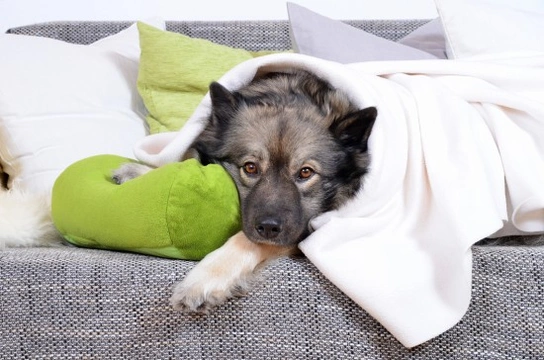
Feeding a recovery diet after sickness or surgery
If your dog is unwell, recovering from an illness, or has recently undergone veterinary treatment such as surgery or chemotherapy, proper nutrition plays a vital role in their recovery. Alongside essential surgical aftercare and infection prevention, feeding a recovery diet can significantly boost your dog’s return to full health.
A recovery diet differs from a normal diet in several important ways. Firstly, it must be palatable, enticing dogs who may have a suppressed appetite to eat again. These diets are carefully designed to tempt your dog’s appetite while also being gentle on a sensitive digestive system, avoiding any foods that may exacerbate symptoms.
Additionally, the diet provides all the essential nutrients and vitamins to support healing, including the right balance of proteins, carbohydrates, and fats. Calories must be sufficient to support recovery but balanced to avoid weight gain in less active dogs.
This guide will help you understand how long to feed a recovery diet, how often to feed your dog, and what foods to offer to aid recovery effectively.
How long does my dog need a special diet for?
The duration of a recovery diet varies based on your dog’s condition and recovery progress. Your vet is the best source of advice tailored to your dog’s needs. Typically, recovery diets support the initial healing phase when your dog is reluctant to eat and the body is actively repairing itself.
For significant surgeries, chemotherapy, or radiation treatment, a recovery diet may be recommended for a week or longer. In contrast, dogs with minor upset stomachs may only require a bland recovery diet for a day or two to ease digestion and encourage eating.
How often to feed when giving a recovery diet
Feeding small, frequent meals helps avoid overwhelming your dog’s recovering digestive system. Your dog may be hesitant to eat, so offer food when they show interest rather than forcing meals at usual times. This flexible approach encourages your dog to eat when ready and supports gradual nutritional intake.
What should I feed to my dog?
Your vet will usually recommend a veterinary-approved recovery diet tailored to your dog’s treatment and condition. These specialised diets contain nutrients to stimulate appetite and support healing.
If a veterinary diet is not available or your dog only has a mild illness, you can prepare a simple recovery meal at home for short-term feeding. Boiled chicken or turkey (without seasoning), mashed with plain brown rice or boiled potato, provides an easily digestible source of protein and carbohydrates. Mild cheese or eggs add gentle protein and essential nutrients.
Incorporating some vegetables rich in vitamins and minerals can help boost recovery, but avoid any foods that your dog may be sensitive to. A spoonful of probiotic yoghurt or a probiotic supplement may also help restore gut balance, especially after stomach upsets.
Remember, home-prepared recovery meals are intended for short-term use only. Long-term feeding should follow your vet’s guidance to ensure complete nutrition.
Key components for a recovery diet
- Protein-rich foods: Essential for tissue repair and immune support. Include boiled chicken, turkey, or eggs.
- Bland carbohydrates: Easy on digestion and provides energy, such as brown rice or boiled potatoes.
- Vitamins and minerals: Support immune function and healing. Include safe vegetables in small amounts.
- Probiotics: Help maintain healthy gut flora after illness or antibiotics.
- Moderate calories: Provide enough energy without leading to weight gain during limited activity.
Common concerns and tips for feeding recovery diets
- Always consult your vet before changing your dog’s diet post-treatment to tailor nutritional needs precisely.
- Be patient and offer enticing food options; recovery appetites often return gradually.
- Avoid seasoning, oils, or highly processed foods that may irritate the digestive tract.
- Keep your dog well hydrated by providing fresh water at all times.
- If vomiting or diarrhoea persists, seek veterinary advice promptly.
By carefully managing your dog’s diet during recovery, you support wound healing, immune function, and energy levels, helping them regain vitality sooner.
If you want to explore more about choosing the best veterinary diets or home preparations, speak to your vet for personalised recommendations suited to your dog’s specific recovery journey.



